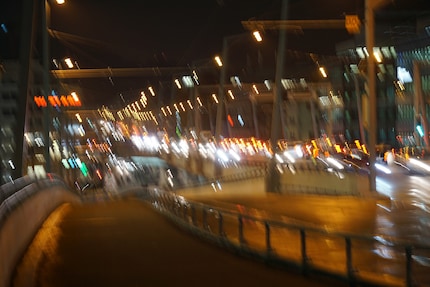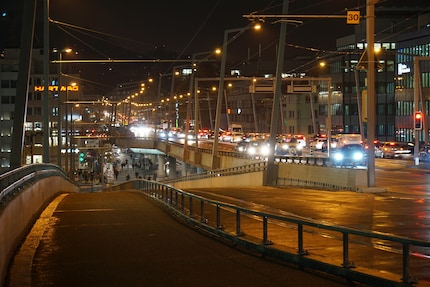
Guide
Quick photo tip: Hold the camera correctly!
by David Lee

Without a tripod, photos become blurred after a certain exposure time. But where exactly is the limit? There is a rule of thumb that gives simple, but usually wrong answers. The reality is more complicated.
If the shutter remains open for longer, more light enters the camera. This allows you to take pictures at night or in low light. However, it can also make a picture look blurred if you don't hold the camera completely still.
The rule of thumb says: The longest possible shutter speed at which the photo is still sharp is the same fraction of a second as the focal length. So if you take a photo at 100 mm, the shake limit is 1/100 of a second.
This teaches beginners that they need to expose shorter in the telephoto range than in the normal or wide-angle range. But that's all they learn. This is because the rule ignores a whole series of decisive factors.
The rule of thumb only applies to full-frame cameras. This is because it is not actually about the focal length, but about the image section. Other sensor sizes have a different crop with the same focal length, so the actual focal length would have to be multiplied by the crop factor.
Image stabilisers compensate for hand movements and can extend the possible exposure time by up to five stops. One step is a doubling of the shutter speed. With five steps, this means that I can extend from 1/100 second to 1/3 second.
Here I have exposed for 1/3 second without image stabilisation (focal length: 70 mm with APS-C sensor).

And here the same with image stabiliser

One-handed, two-handed, supported or hopping on one leg - it makes a huge difference. That's why I've written a serious tip on how you should hold the camera
.
You hold such a monster telephoto lens less steady than a super-light standard lens. In the already critical telephoto range, the rule of thumb is therefore particularly tricky.
A camera with a high resolution will show even the smallest blurs that are not even visible with a low resolution. Conversely, small blurs disappear when you reduce your photo to web or Instagram size.
With a good image stabiliser, you will hardly ever leave the critical range when applying the rule of thumb, so it does little damage. However, if there is no stabiliser, then watch out! In changing, new situations, I recommend using the automatic programmes (Auto, P or A) anyway. Your camera knows most of the influences and takes them into account when calculating the shutter speed. In static situations, trial and error and experience help.
My interest in IT and writing landed me in tech journalism early on (2000). I want to know how we can use technology without being used. Outside of the office, I’m a keen musician who makes up for lacking talent with excessive enthusiasm.
Practical solutions for everyday problems with technology, household hacks and much more.
Show all